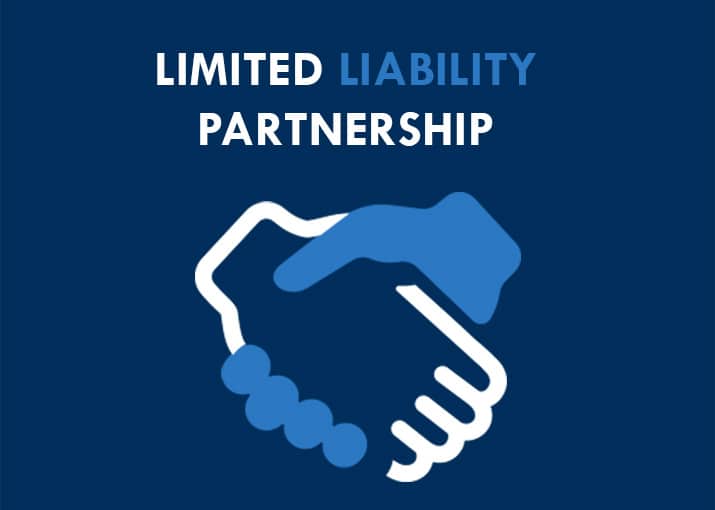A Limited Liability Partnership (LLP) is a unique hybrid structure that combines the flexibility of a partnership with the legal protections of a corporation.
If you’ve ever dreamt of starting a business but were wary of the personal risks involved, an LLP might be your golden ticket.
With an LLP, partners can engage in a joint business venture while limiting their personal liabilities for the debts and obligations of the business.
Sounds great, right?
Let’s dive deeper into why limited liability partnerships have become so popular and how they work in practice.
Why Choose a Limited Liability Partnership?
Running a business is full of risks.
You’ve got the day-to-day challenges of management, finances, employees, and, of course, the possibility of failure.
The biggest fear for many entrepreneurs, especially in traditional partnerships, is the potential for personal loss.
In a regular partnership, each partner is personally liable for the debts of the business.
So, if things go south, creditors could come after your assets—your home, savings, and more.
But that’s where an LLP shines.
By creating a limited liability partnership, partners get to protect their assets from the business’s liabilities.
You’re still part of the business, sharing profits and management responsibilities, but without the overwhelming risk.
It’s like getting the best of both worlds.
Real-life Example:
Consider two architects, Jane and Mike, who want to start a firm together.
In a traditional partnership, if the firm faces a massive lawsuit or financial failure, Jane and Mike’s savings and homes could be on the line.
However, by forming an LLP, their assets remain protected.
Even if the firm runs into debt, their liability is limited to the amount they’ve invested in the business.
Their personal bank accounts and homes are off-limits to creditors.
This gives Jane and Mike the peace of mind they need to focus on growing their business.
How Does a Limited Liability Partnership Work?
In an LLP, each partner’s liability is limited to their contribution to the partnership.
This structure gives the limited liability partnership an edge over traditional partnerships, where every partner is fully liable for the business’s obligations.
LLPs are separate legal entities, meaning they can enter into contracts, own property, and sue or be sued.
Partners in an LLP aren’t personally responsible for each other’s misconduct or negligence.
This is one of the biggest benefits of an LLP.
Imagine if one partner makes a poor decision or mishandles a client’s funds.
In a traditional partnership, both partners might suffer the consequences.
However, with a limited liability partnership, the other partners are not held personally responsible.
Key Benefits of a Limited Liability Partnership
- Limited Liability Protection
The primary advantage of an LLP is the protection it provides to each partner.
Personal assets are not at risk, even if the partnership faces financial difficulties or legal issues.
This encourages more individuals to take the entrepreneurial plunge without the fear of losing everything.
- Flexible Management Structure
An LLP gives partners the flexibility to structure the management of the business as they see fit.
Unlike corporations, which have strict governance rules, LLPs allow the partners to decide how they’ll operate.
You could divide responsibilities equally, or one partner could take the reins while the others focus on specific areas.
It’s completely up to the partners.
- Tax Advantages
A limited liability partnership offers some tax benefits as well.
In most countries, LLPs enjoy “pass-through taxation.”
This means that the partnership itself isn’t taxed as an entity.
Instead, profits and losses pass through to the individual partners, who then report them on their tax returns.
This avoids the “double taxation” that corporations face, where both the company and the shareholders are taxed.
- Protects Against Bad Decisions of Other Partners
In an LLP, you’re shielded from the actions of your fellow partners.
If one partner makes a mistake or faces legal trouble, it doesn’t affect the personal assets of the other partners.
This protection offers peace of mind in industries where errors or lawsuits are common.
- Separate Legal Entity
A limited liability partnership has its legal personality, separate from its partners.
This means that the LLP can own property, enter into contracts, and act as a legal entity without tying partners directly to its activities.
This separation can be critical for larger ventures or when dealing with banks and clients.
The History of Limited Liability Partnerships
The idea of a limited liability partnership is relatively modern.
The LLP structure was first introduced in the U.S. in the 1990s as a response to financial scandals and lawsuits affecting major accounting firms.
These firms, operating under traditional partnership models, were facing significant financial liabilities because of the actions of just a few partners.
This led to a demand for a new business model that could limit the personal liability of innocent partners.
Over time, the LLP model spread to other countries, including the U.K., Canada, Australia, and many parts of Asia.
Now, it’s a favored business structure for professionals like lawyers, accountants, and consultants.
Who Should Use a Limited Liability Partnership?
An LLP is particularly well-suited for businesses that rely heavily on professional expertise, such as law firms, accounting practices, and architectural firms.
It allows professionals to collaborate while protecting themselves from potential risks posed by other partners.
For example, in an accounting firm, one partner’s negligence should not put the other partners at risk of financial ruin.
If you’re in a business where trust and collaboration are key, but you want to ensure you’re not held responsible for someone else’s mistakes, an LLP might be the best choice.
Setting Up a Limited Liability Partnership
Starting an LLP is straightforward, but there are specific steps involved, depending on your country’s legal framework.
- Choose a Name
Just like with any business, you need to choose a unique name for your LLP.
Ensure it complies with local regulations and isn’t already in use by another company.
The name must typically include “LLP” at the end to indicate its legal structure.
- File the Necessary Documents
You’ll need to file formal paperwork with your local government agency, such as a certificate of formation or incorporation.
This process officially registers your business as an LLP.
- Draft an LLP Agreement
An LLP agreement outlines the roles, responsibilities, and contributions of each partner.
It also details how profits will be shared, how decisions will be made, and what happens if one partner wants to leave.
While this agreement may not be legally required, it’s a crucial document that can prevent disputes down the road.
- Register for Taxes
Depending on your location, you may need to register your LLP for tax purposes, obtain a business license, or register for VAT (Value Added Tax).
- Comply with Ongoing Reporting Requirements
Many countries require LLPs to file annual reports, update their records, and maintain transparency about their financial dealings.
This helps maintain the credibility and legal standing of the partnership.
Drawbacks of a Limited Liability Partnership
While there are many advantages to forming an LLP, it’s not without its drawbacks.
- Limited to Certain Professions
In some countries, limited liability partnerships are restricted to specific types of businesses, often professional services like law, accounting, or consulting.
If your business doesn’t fit these categories, you might not be eligible to form an LLP.
- Complexity in Taxes and Management
Though LLPs offer tax benefits, the structure can also lead to complexities in tax filings, especially when profits are distributed unevenly among partners.
You may need the help of an accountant to ensure that all filings are handled correctly.
- Public Disclosure of Finances
In many countries, LLPs are required to publicly disclose certain financial information.
For private businesses, this lack of confidentiality can be a drawback.
- Potential for Internal Conflicts
While the limited liability partnership structure protects partners from each other’s mistakes, it doesn’t eliminate internal conflicts.
Disagreements over profit distribution, management decisions, or the future direction of the business can arise, and they can be difficult to resolve if the partnership agreement isn’t clear.
Final Thoughts: Is a Limited Liability Partnership Right for You?
A limited liability partnership offers the best of both worlds—the flexibility of a traditional partnership and the protection of a corporation.
It’s an ideal option for professionals who want to collaborate but also want to shield their assets from the business’s liabilities.
If you’re thinking about forming an LLP, be sure to consult with legal and financial professionals to understand how this structure fits within your specific industry and goals.








Comments are closed